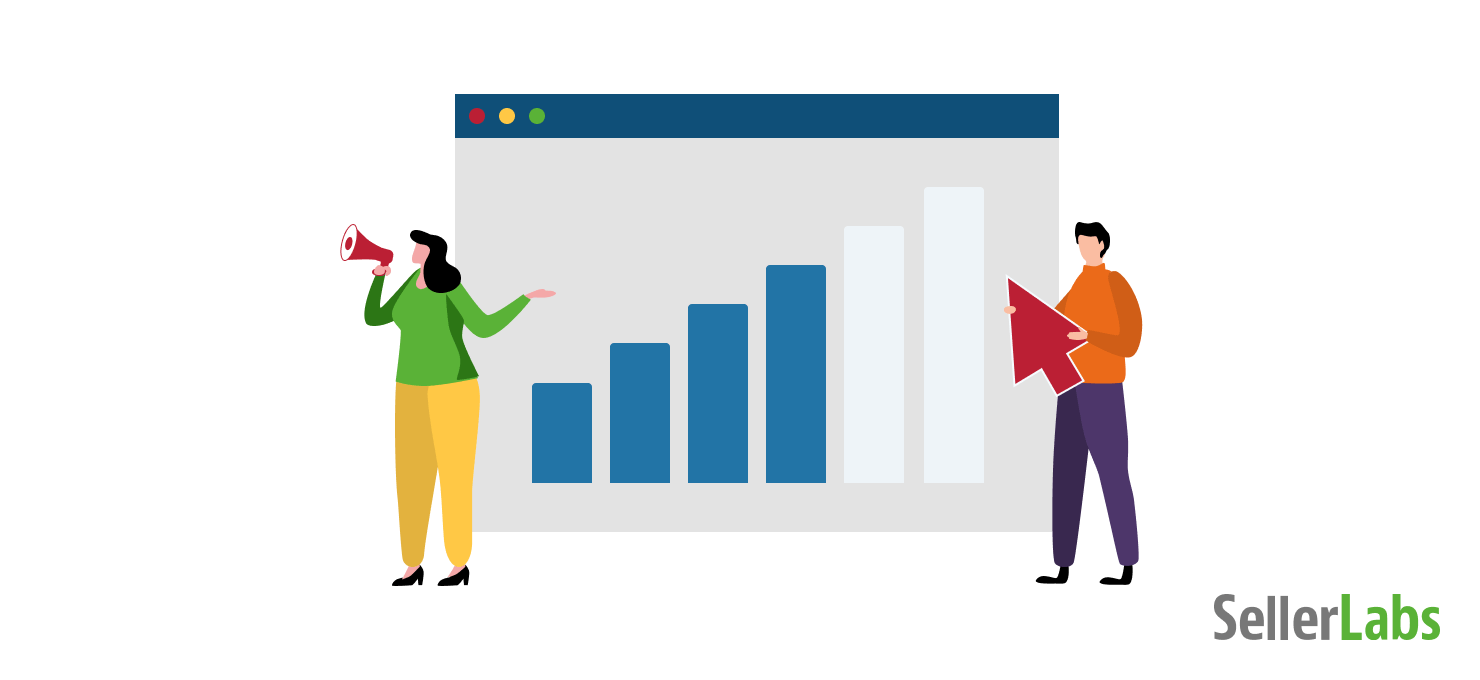External Traffic Options for Amazon Sellers in 2020

There’s no denying it, the internet marketing space is the worst offender of “shiny object syndrome” on the planet.
As someone who works with Amazon sellers every day, I can tell you one struggle sellers have is cutting through the noise and focusing on what matters.
There are myriad strategies for digital advertising: Facebook Ads, Google Ads, Reddit Ads, Manychat, email list building, and more. Even basic understanding of them all generally takes years of learning and thousands of dollars in “learning ad spend.” By the time you’ve learned them all, there’s a new player in the space.
We’re going to start with a foundational understanding of various digital marketing strategies that can help you and your business.
Key Differences Between External Traffic Platforms
Before telling you exactly what to do, it’s important to explain some key concepts and mediums different marketers can use.
Interruption Marketing
Facebook Ads are considered “Interruption Marketing” because people are scrolling through images of friends and family and status updates when there’s an ad in the middle of all of this personal connection. It breaks up the standard user expectation of the “mindless scroll.”
Search Based Marketing
Google Ads, in contrast, are shown to people typing in specific search queries. People spend time on Google differently than time spent on social media platforms. Thus, you’ll need to consider your ads differently.
Understanding the medium and how people interact on that medium is vital to any digital marketing strategy. This alone can save thousands of dollars in wasted ad spend.
The 4 Best Marketing Platforms for Driving External Traffic to Amazon
All marketing strategies from Facebook Ads, email, or Google Ads have unique benefits and pitfalls.
Looking for ways to launch a product on Amazon? Start here.
#1: Amazon Ads
Don’t shirk your Amazon ads just because you’re working to drive traffic from other sources. Amazon Advertising is still one of the best ways to get eyes on your products.
Great For:
- Boosting keyword ranking by driving sales through targeted keywords or phrases.
- Targeting customers with buyer intent.
- Getting real Amazon data to improve your listing.
Not So Great For:
- Immediate results on new campaigns.
- Being able to freely scale up spending.
Remember, keywords only start receiving traffic once Amazon deems them as relevant for your listing. Shopper conversions from search helps with this.
Build on your Amazon Advertising foundations with our comprehensive guide.
#2: Facebook Ads
Remember, Facebook Advertising is considered “Interruption Marketing,” so you do have to be more careful with your target audience and message.
Great For:
- Building email and Manychat lists.
- Retargeting “warm” customers and leads with specific ads.
- Moving leads through longer sales processes with a series of ads.
Not So Great For:
- Selling your products to people who’ve never heard of you.
- People with little to no knowledge of digital marketing strategy.
- Tracking whether your ads are converting to sales on Amazon or not.
Facebook is another advertising giant (up there with Google and Amazon), but the strategy is very different. While it’s fairly easy to navigate and set up the ads themselves, it’s important to have a solid strategy and variety of assets on hand.
Take leads through a customer journey:
- Run an ad to people interested in gardening in Ohio to view your blog post about gardening tips.
- Re-target people who viewed that blog post with a video ad showing a customer testimonial about how your product works.
- Re-target people who viewed more than 50% of that video with a limited time offer for 25% off your product.
- Re-target all people who clicked your offer with a testimonial video
Setting up these kinds of advertising funnels can take significant resources such as websites, landing pages, videos, graphics, blogs, long copy, and coordinating the strategy for each funnel. We often see this medium outsourced to an advertising agency or Virtual Assistant.
#3: Google Ads
Google Ads are safest when thought of as “search ads.” You’ll need a series of relevant keywords or phrases your buyers would commonly search when looking to buy your product or brand.
Great For:
- Targeting people with “buyer intent” (actively looking to purchase)
Not So Great For:
- Email list building
- Tracking whether clicks are converting to sales on Amazon.
Google ads are unique because you can choose to only run ads to people searching for specific searches with “buyer intent.” They’re not necessarily just browsing.
Levels of Google Searches Buyer Intent:
- No Buyer Intent: “spotted frogs”
- Some Buyer Intent: “spotted frogs cheap”
- High Buyer Intent: “where to buy spotted frogs online”
The higher the buyer intent, the more likely running ads on that search term is going to convert to sales. The person searching for “spotted frogs“ may just want to show someone a photo or try to identify a critter outside.
Google Ads Are Expensive!
Every ads platform has a “golden era” when clicks are inexpensive and performed well. Long gone are those days for Google! Being a mature ads platform, the clicks typically cost from $1.50 to $4 per click, and far more in high-competition categories.
Recommended Google Ads Strategy
It’s a far more complex platform to navigate than Amazon Sponsored Products, so unless you have the marketing chops or many hours and dollars to learn, keep things simple.
Many sellers have noticed minor ranking increases from sending external traffic to Amazon, so if you create a basic campaign targeting high buyer intent keywords, set the budget to just $5 or $10 per day, then sending those few clicks to Amazon may help boost your ranking and some may even convert to a sale!
#4: Email Marketing / Manychat
Email Marketing and Manychat have been grouped together for the almost 1:1 interaction with a customer base. The three former strategies involve shopper effort, whereas this strategy comes straight from your brand. This is better known as “permission marketing.”
Great For:
- Engaging an audience who knows your product or brand
- Building a secure brand asset
- Increasing repeat buyers
Not So Great For:
- Immediate results/ short term mindset
Building a list takes time, money, and a tremendous amount of effort. This will be your strongest long-term strategy. Down the road, you could market new product launches to your list without spending a dime on the other advertising efforts.
Biggest Benefit: You Own The Audience
Unlike the other platforms mentioned, you actually own your email list (not true of Manychat lists though). The others are great platforms, but they make you pay to access their audience and they have the power to take it away from you in an instant.
Recommended Email / Manychat Strategy
Use an email automation software such as Mailchimp to build a list of customers and potential customers using Facebook ads. Send them value-based emails to keep them engaged with your brand and build yourself as an authority. When you need to launch products or cross sell items, mail your list!
The same strategy applies to Manychat lists, but be aware of how the mediums are different. You’d probably be pretty annoyed if you got a marketing spam email as a Facebook Messenger message, right?
Key Takeaways / TLDR
- Start with Amazon Sponsored Ads. They’re always appropriate on some level for all sellers.
- Don’t get caught up in “shiny object syndrome.” Master one advertising tactic at a time.
- Know your skill and knowledge level. Don’t overestimate your ability to be successful on a new marketing platform in a short time frame.
- Understand the unique pros and cons/ ways to act on each marketing platform.
This is a guest post from Danny Carlson of KenjiROI, an Amazon Seller Agency. Danny is also host of the Actualize Freedom Podcast (Amazon FBA) and the Danny Carlson Podcast (building agencies, mindset, and lifestyle).

Maria is an SEO Content Specialist at Seller Labs. Once captured by digital and content marketing in her student days, she keeps living and breathing it ever since.






